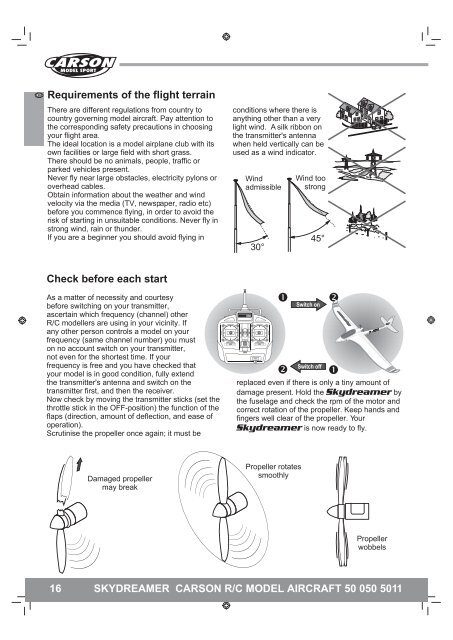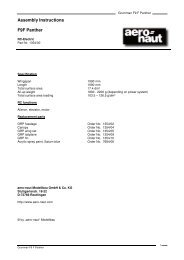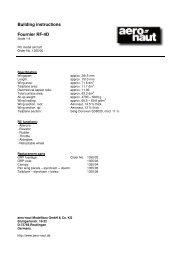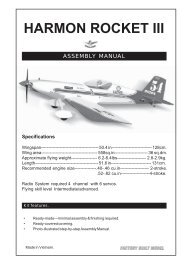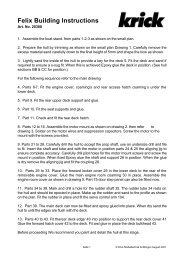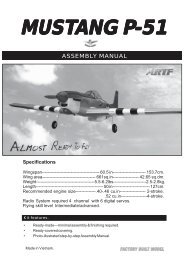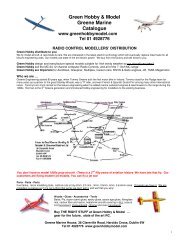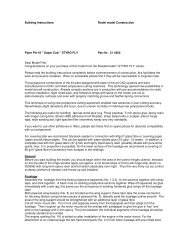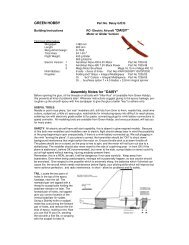Skydreamer - Carson
Skydreamer - Carson
Skydreamer - Carson
Create successful ePaper yourself
Turn your PDF publications into a flip-book with our unique Google optimized e-Paper software.
10 20 40 60 80 100<br />
FM Tx<br />
40.665MHz<br />
GB<br />
Requirements of the flight terrain<br />
There are different regulations from country to<br />
country governing model aircraft. Pay attention to<br />
the corresponding safety precautions in choosing<br />
your flight area.<br />
The ideal location is a model airplane club with its<br />
own facilities or large field with short grass.<br />
There should be no animals, people, traffic or<br />
parked vehicles present.<br />
Never fly near large obstacles, electricity pylons or<br />
overhead cables.<br />
Obtain information about the weather and wind<br />
velocity via the media (TV, newspaper, radio etc)<br />
before you commence flying, in order to avoid the<br />
risk of starting in unsuitable conditions. Never fly in<br />
strong wind, rain or thunder.<br />
If you are a beginner you should avoid flying in<br />
conditions where there is<br />
anything other than a very<br />
light wind. A silk ribbon on<br />
the transmitter's antenna<br />
when held vertically can be<br />
used as a wind indicator.<br />
Wind<br />
admissible<br />
30°<br />
Wind too<br />
strong<br />
45°<br />
Check before each start<br />
As a matter of necessity and courtesy<br />
before switching on your transmitter,<br />
ascertain which frequency (channel) other<br />
R/C modellers are using in your vicinity. If<br />
any other person controls a model on your<br />
frequency (same channel number) you must<br />
on no account switch on your transmitter,<br />
not even for the shortest time. If your<br />
frequency is free and you have checked that<br />
your model is in good condition, fully extend<br />
the transmitter's antenna and switch on the<br />
transmitter first, and then the receiver.<br />
Now check by moving the transmitter sticks (set the<br />
throttle stick in the OFF-position) the function of the<br />
flaps (direction, amount of deflection, and ease of<br />
operation).<br />
Scrutinise the propeller once again; it must be<br />
50<br />
<br />
<br />
Switch on<br />
Switch off<br />
<br />
<br />
replaced even if there is only a tiny amount of<br />
damage present. Hold the <strong>Skydreamer</strong> by<br />
the fuselage and check the rpm of the motor and<br />
correct rotation of the propeller. Keep hands and<br />
fingers well clear of the propeller. Your<br />
<strong>Skydreamer</strong> is now ready to fly.<br />
Damaged propeller<br />
may break<br />
Propeller rotates<br />
smoothly<br />
Propeller<br />
wobbels<br />
16 SKYDREAMER CARSON R/C MODEL AIRCRAFT 50 050 5011


